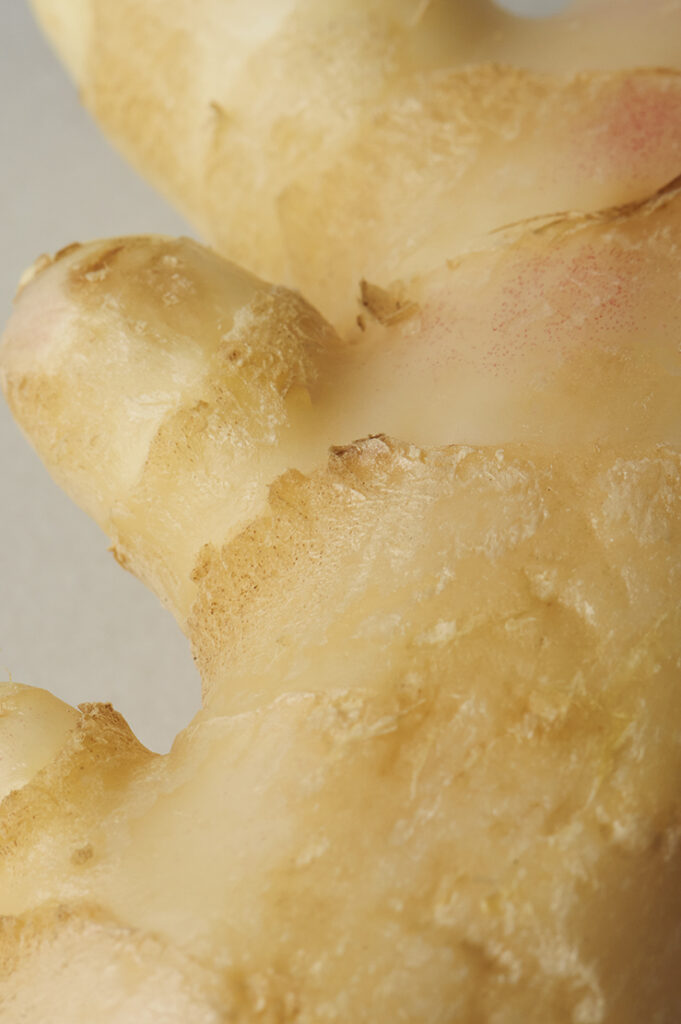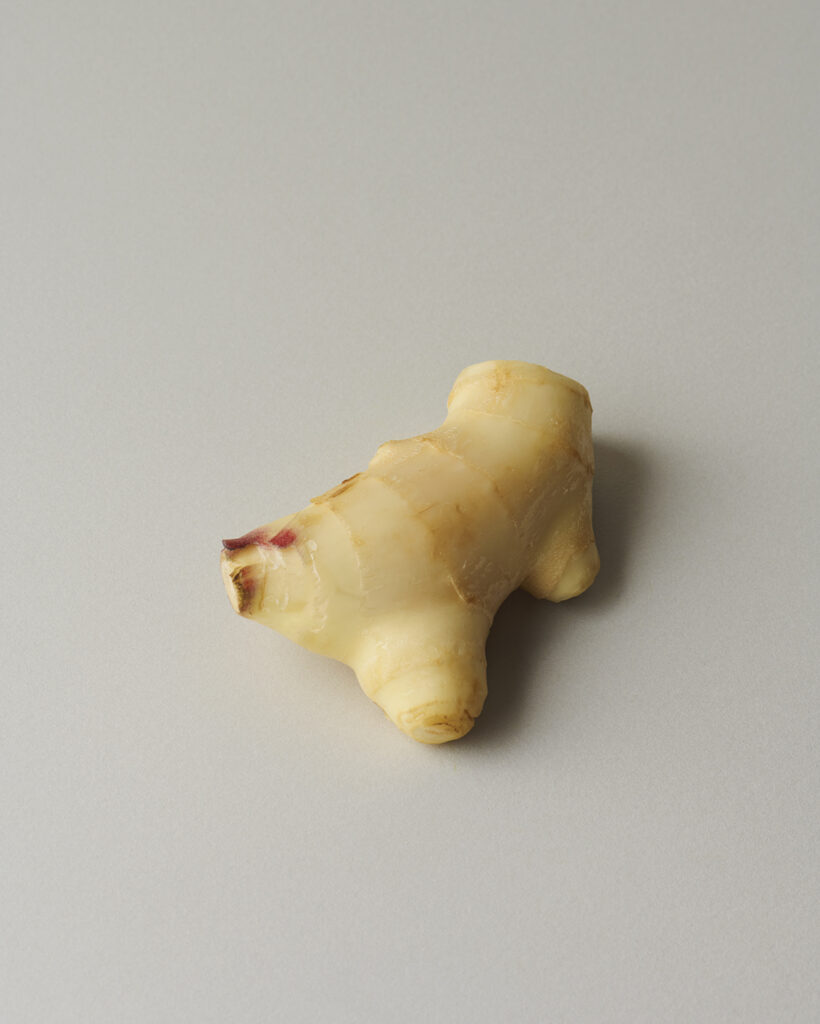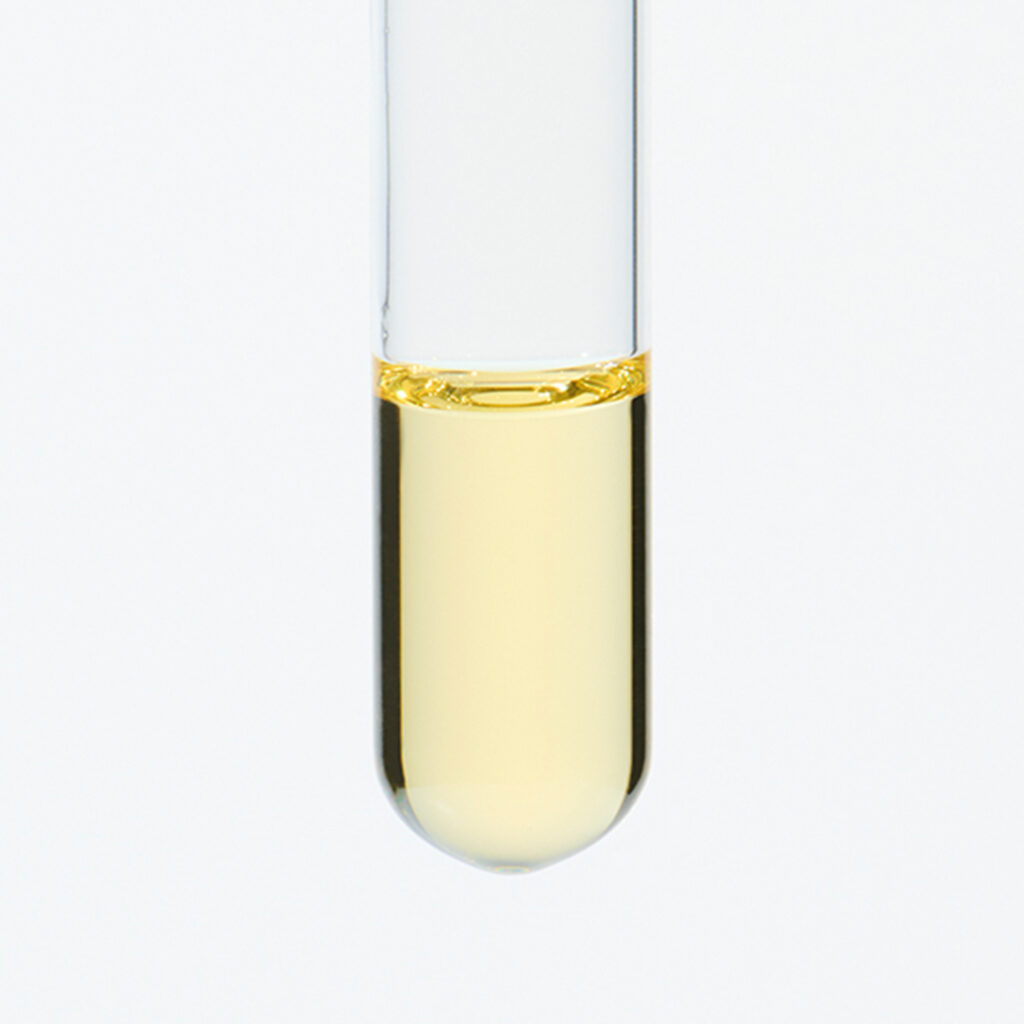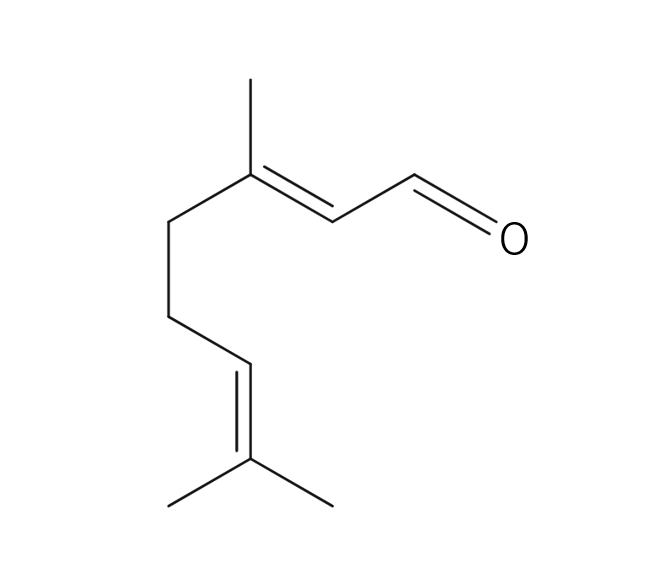About 0.5%-1.0% of Ginger essential oil is obtained by steam distillation from the root, with a slightly yellowish color. Its primary constituent is β-Zingiberene, and it also contains components like citral, which contribute to its refreshing lemon-like aroma. However, it's the spicy and hot impression characteristic of ginger that makes it familiar to us.
Ginger essential oil is versatile and finds use not only in men's fragrances but also in women's oriental notes. Recently, its spicy aroma has been utilized to create an image associated with body slimming effects. This essential oil plays a pivotal role in oriental scents and has been a secret spice in fragrance creation. It pairs exceptionally well with slightly bitter scents such as Lemongrass, Yuzu, and Mandarin, as well as invigorating scents like Rosemary and Lemon. Given its potent scent, it is advisable to maintain a balanced blend, ensuring not to overpower by using excessive amounts.






